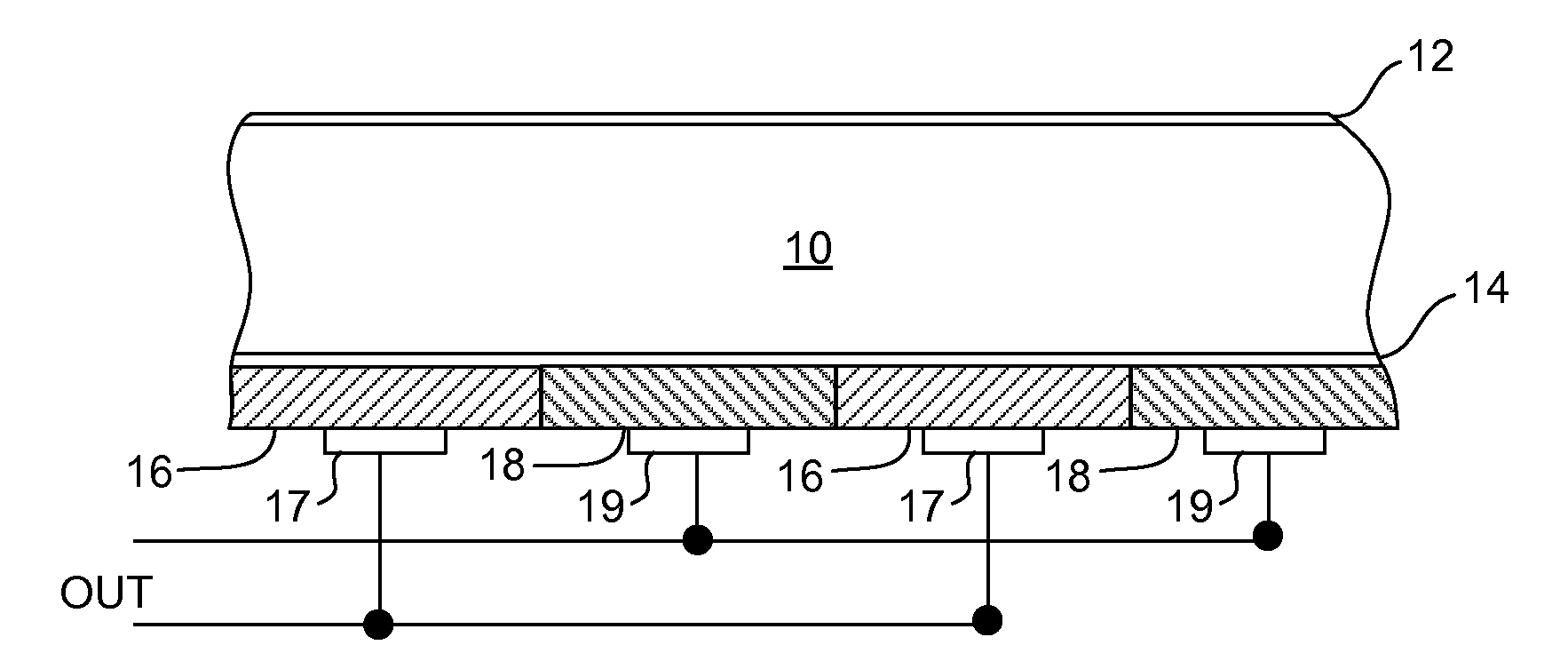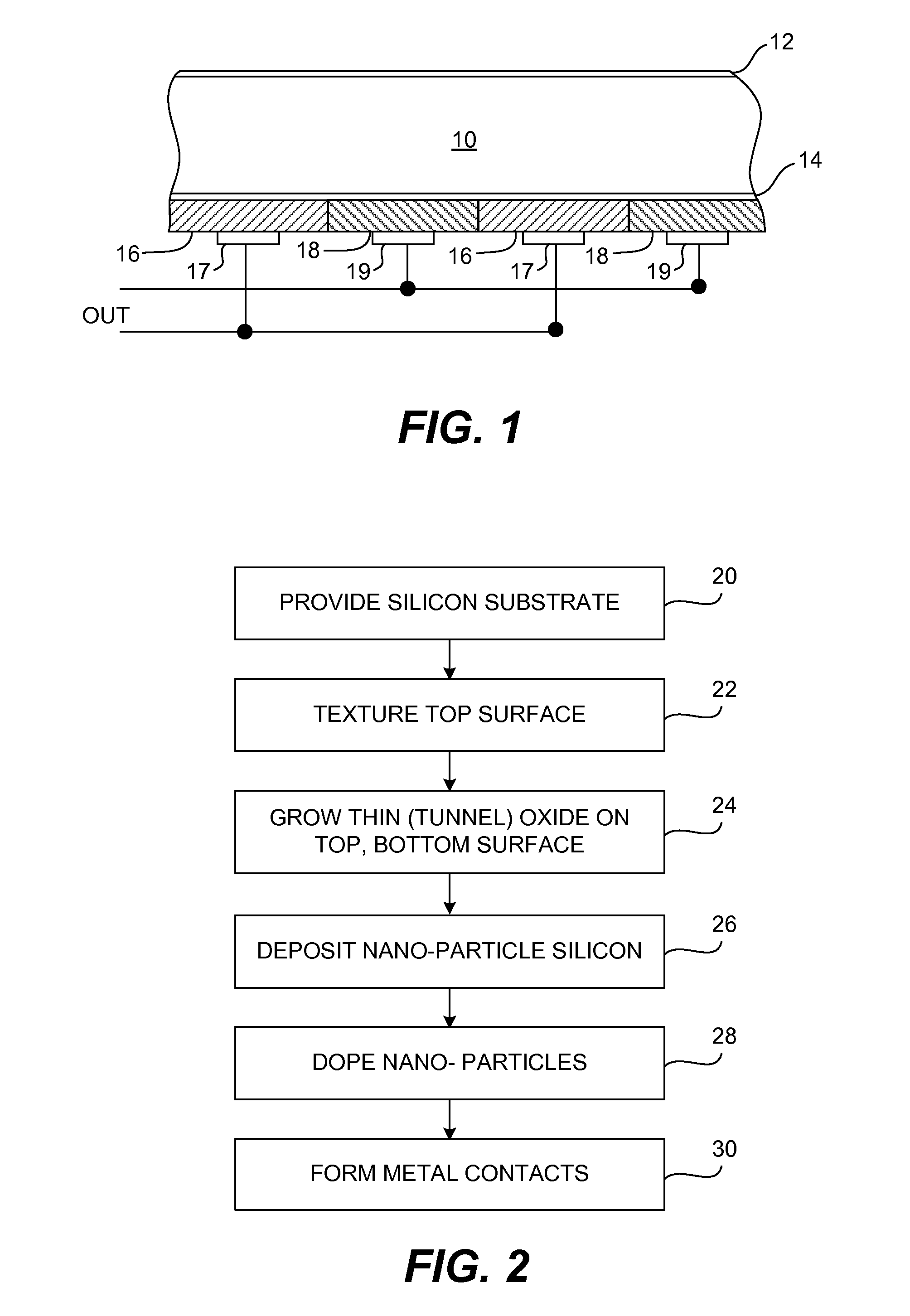Solar cell having silicon nano-particle emitter
a technology of solar cells and emitters, applied in semiconductor devices, solid-state devices, power plants, etc., can solve the problem of limiting the efficiency of silicon photovoltaic cells in directly converting solar energy to electricity to less than 30%, and achieve the effect of reducing the recombination of nano-particles in the interfa
- Summary
- Abstract
- Description
- Claims
- Application Information
AI Technical Summary
Benefits of technology
Problems solved by technology
Method used
Image
Examples
Embodiment Construction
[0012]FIG. 1 illustrates in section view one embodiment of a solar cell in accordance with the invention. As in the conventional silicon solar cell, the cell comprises a polysilicon or single crystalline silicon substrate 10 with a thickness on the order of 200 microns and which can be either undoped or lightly doped (e.g. 5 ohm-centimeter). A passivation layer 12 is formed on the front surface of the substrate which can be textured by anisotropic texturing for example, prior to formation of the passivation layer. The passivation layer can be a thin silicon oxide layer which is grown simultaneously with a high quality tunnel oxide layer 14 on the bottom or back surface of substrate 10. The top passivation layer 12 can be coated with an anti-reflective coating such as silicon nitride or doped silicon carbide (not shown) as in conventional processing.
[0013]The back surface of substrate 10 includes alternating p-emitters 16 and n-emitters 18 which are formed by deposition over tunnel o...
PUM
 Login to View More
Login to View More Abstract
Description
Claims
Application Information
 Login to View More
Login to View More - R&D
- Intellectual Property
- Life Sciences
- Materials
- Tech Scout
- Unparalleled Data Quality
- Higher Quality Content
- 60% Fewer Hallucinations
Browse by: Latest US Patents, China's latest patents, Technical Efficacy Thesaurus, Application Domain, Technology Topic, Popular Technical Reports.
© 2025 PatSnap. All rights reserved.Legal|Privacy policy|Modern Slavery Act Transparency Statement|Sitemap|About US| Contact US: help@patsnap.com


